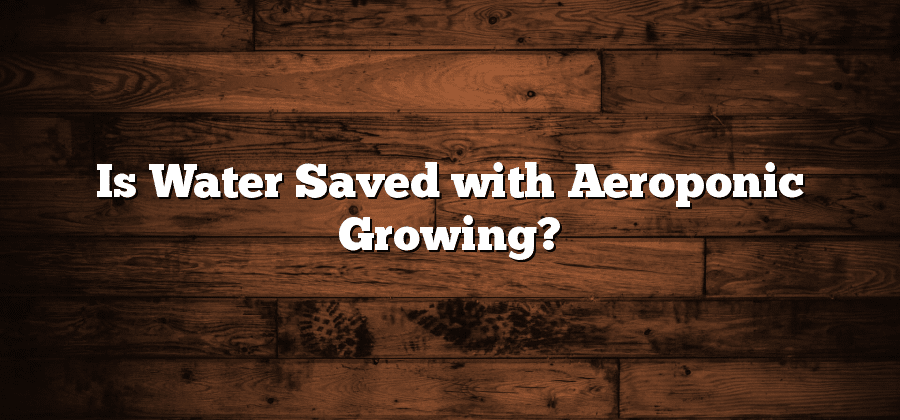Understanding Aeroponic Growing Systems
Aeroponic growing systems have revolutionized the way we cultivate plants by using a unique method that eliminates the need for soil and relies on misting the roots with nutrient-rich water instead. This innovative technique provides numerous advantages over traditional agriculture, including efficient water usage, faster growth rates, and reduced risk of disease. In aeroponic systems, plants are suspended in the air or on a mesh platform, allowing the roots to be constantly exposed to a fine mist or spray of water. This not only ensures that the plants receive a sufficient amount of moisture, but also promotes optimal nutrient absorption and oxygenation.
Additionally, aeroponic systems enable plants to grow at an accelerated rate compared to conventional farming. Without the constraints of soil, roots have unrestricted access to nutrients and oxygen, allowing them to develop more rapidly. This results in shortened crop cycles, meaning farmers can harvest their produce sooner and increase their overall productivity. Moreover, the absence of soil greatly reduces the risk of soil-borne pests and diseases, making aeroponics a more sustainable and environmentally-friendly approach to cultivation.
The Efficiency of Water Usage in Aeroponic Systems
Aeroponic systems have gained attention in recent years due to their highly efficient water usage. Unlike traditional agriculture methods that rely on soil to deliver water to plants, aeroponic systems utilize a misting or fogging technique to provide moisture directly to plant roots. This targeted approach reduces water waste as it delivers water in precise amounts, ensuring that plants receive only what they need for optimal growth.
One of the key reasons why aeroponic systems are so efficient in water usage is the recirculation method employed. In these systems, excess water not absorbed by the plants is collected and recycled back into the system. By reusing water in this manner, aeroponics drastically reduces the requirement for additional water supply. This is significant, particularly in regions that face water scarcity or have limited access to freshwater sources. Furthermore, the recirculation process also prevents nutrient loss, as these valuable components are also recycled back into the system, leading to enhanced plant growth and yields.
Exploring the Benefits of Aeroponic Cultivation
Aeroponic cultivation is a modern agricultural technique that offers numerous benefits to farmers and consumers alike. One of the key advantages of aeroponics is its ability to maximize crop production in limited space. By suspending plants in the air and misting their roots with nutrient-rich water, aeroponic systems allow for optimal nutrient absorption and oxygenation. This method eliminates the need for soil, making it possible to grow crops vertically or in tight indoor spaces. As a result, farmers can produce a greater quantity of crops in smaller areas, leading to increased productivity and profitability.
Another significant benefit of aeroponic cultivation is its efficient use of water resources. Unlike traditional agricultural methods that require large amounts of water to irrigate crops, aeroponics employs a closed-loop system. This means that water is continuously recirculated within the system, minimizing wastage. Additionally, the misting technique used in aeroponic systems allows for precise control of water distribution, ensuring that each plant receives the optimal amount of moisture. By reducing water usage and minimizing runoff, aeroponic cultivation helps to conserve this precious natural resource for future generations.
Water Conservation Techniques in Aeroponic Farming
Aeroponic farming has gained popularity in recent years due to its efficient use of water resources. As the world faces increasing water scarcity and the need for sustainable agricultural practices, water conservation techniques play a crucial role in aeroponic farming. One of the main water conservation techniques used in this method is the recirculation of nutrient-rich water.
In aeroponic systems, water is continuously circulated and reused, minimizing wastage. This is achieved by collecting the runoff from the plant roots and recirculating it back into the system. By constantly recycling the nutrient solution, aeroponic farming reduces water consumption significantly compared to traditional agriculture methods, where water is often wasted through leaching or evaporation. Additionally, the precise control of water delivery in aeroponic systems ensures that plants receive the exact amount of water they need, further enhancing water conservation efforts.
However, despite its water-saving advantages, aeroponic farming is not without its challenges in terms of water conservation. The fine mist or fog used to deliver water and nutrients to the plant roots can sometimes result in a loss of water through evaporation. To mitigate this, aeroponic systems are often equipped with humidity controls and automated misting cycles that minimize the amount of water lost to evaporation. Additionally, monitoring and correctly adjusting the mist density and duration based on environmental conditions can further optimize water usage in aeroponic farming.
Comparing Water Usage in Aeroponic vs. Traditional Agriculture
Aeroponic farming and traditional agriculture differ significantly in their water usage. In traditional agriculture, water is typically applied to the soil in large quantities, often through irrigation systems. This method can result in significant water wastage due to evaporation, run-off, and insufficient water absorption by the plants. Conventional agriculture also requires a considerable amount of water to be used for weed control, which further adds to the overall water consumption.
On the other hand, aeroponic growing systems have shown to be highly efficient in water usage. In these systems, plants are grown in a misted environment without any soil. The nutrient-rich water is delivered directly to the plant’s roots through a fine mist, providing optimal water absorption. As a result, aeroponic farming utilizes significantly less water compared to traditional agriculture. Furthermore, the water in aeroponic systems can be recirculated and reused, minimizing waste and promoting sustainability. These water conservation techniques make aeroponic cultivation an attractive choice for areas facing water scarcity or those aiming to reduce water consumption in agriculture.






